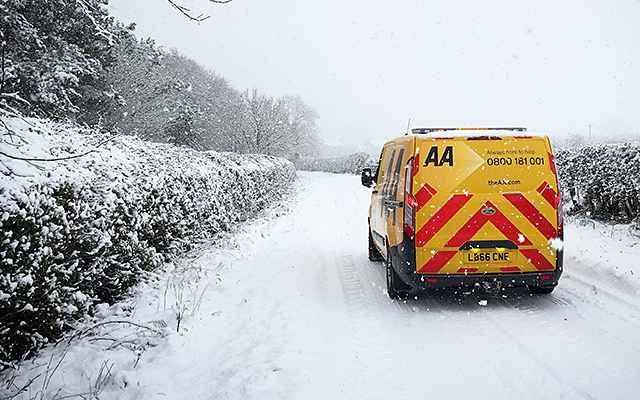28 December 2018
The main return to work day (Wednesday 2 January) is predicted to be one of the busiest of the year for breakdowns, as many vehicles will have been unused over the festive period.
The AA expects to attend more than 13,000 breakdowns - almost a third (29%) more than normal, at a time when two fifths (42%) of drivers will take to the road according to an AA-Populus poll*. Of these, a quarter (25%) will be on our busiest roads for the big return to work.

On the equivalent day in 2018 (Tuesday 2 Jan), we attended more than 15,600 breakdowns and received a 60% jump in calls for help – thanks in part to Storm Eleanor, which left roads flooded and littered with debris. Battery issues were the cause of more than a quarter (26%) of the day’s breakdowns.
George Flinton, AA patrol of the year, says: “The first working day back in January is typically one of the busiest of the year for the AA, with flat batteries the main culprit. Over the Christmas break, many cars get left unused. That causes the output of the battery to drop which, especially for old batteries, can mean they don’t have the power to turn the engine over.
If your car has been left sitting idle or has done mostly short, stop-start journeys, the battery’s charge will likely be depleted
“If your car has been left sitting idle or has done mostly short, stop-start journeys, the battery’s charge will likely be depleted. Ideally, trickle charge the battery or, if possible, take it out before Wednesday for at least half an hour to boost the battery.”
New Year travel
The AA-Populus survey* also found that two fifths (40%) of respondents plan to drive on main roads or motorways on New Year’s Eve, with more than a quarter (26%) planning to drive on New Year’s Day.
The AA is urging party-goers not to risk drink driving, and to consider travel plans for the morning after.
- The latest statistics from the Department for Transport show 220 people died and 6,070 were injured in reported drink driving accidents in 2016.
- More than a fifth (21%) of drink drive accidents occur between 23:00 and 02:00 – a time when many people will be leaving New Year parties.
More temptations
Edmund King, AA president says: “There are more temptations to drink and drive at this time of year, but it should be avoided at all costs as it could cost your licence, your livelihood or your life.
“Many drivers do make the sensible choice on the night, but some don’t realise that they could still be over the limit the morning after.
Many drivers do make the sensible choice on the night, but some don’t realise that they could still be over the limit the morning after
“If you are planning to drive the next day, limit the amount of alcohol you drink. Avoid relying on methods to reduce blood alcohol levels, like drinking water and eating a large breakfast - the only safe way is to drink less or give plenty of time for the alcohol to leave your system. The same risks apply the morning after as the night before so if in doubt, don’t risk it.”
* Populus received 20,410 responses from AA members to its online poll between 13 and 19 November 2018
